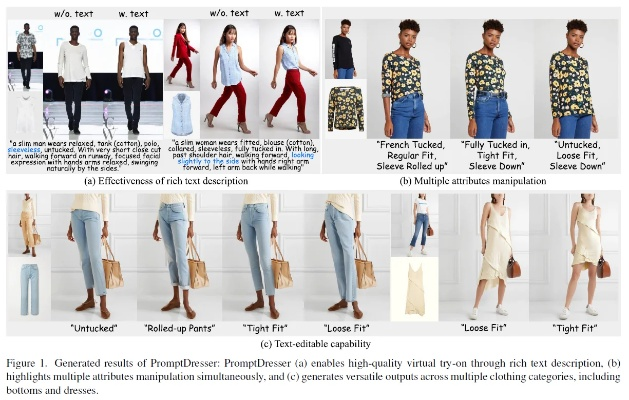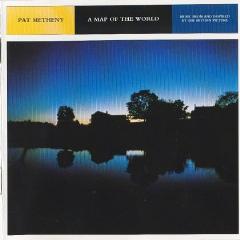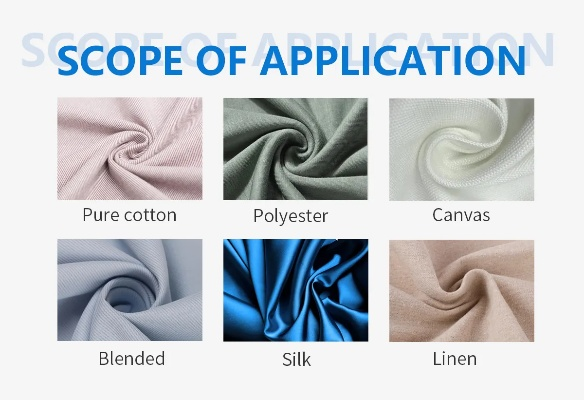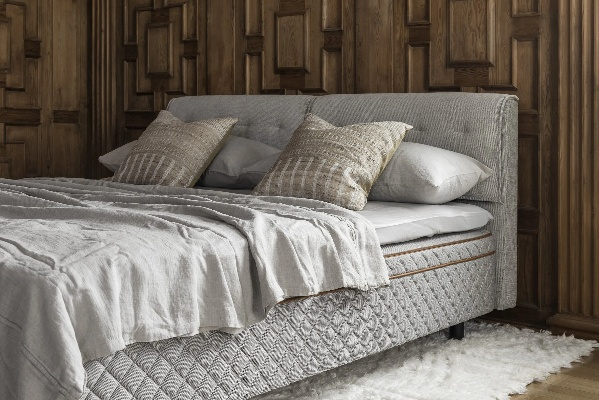Strategic Framework for Special Textile Development
"In this article, we propose a strategic framework for special textile development. The framework emphasizes the importance of diversified raw materials and innovative processes in creating high-quality specialty textiles. We argue that by adopting sustainable practices and investing in R&D, companies can enhance their competitiveness and meet the demands of a growing market."
Introduction: Textiles play a crucial role in our daily lives, from clothing and household items to industrial and medical applications. The development of special textiles is not only a reflection of technological advancement but also a testament to innovation and creativity. In this article, we will outline a strategic framework for the development of special textiles, highlighting key considerations and potential areas for growth. We will also present some case studies that demonstrate successful implementation of this framework.
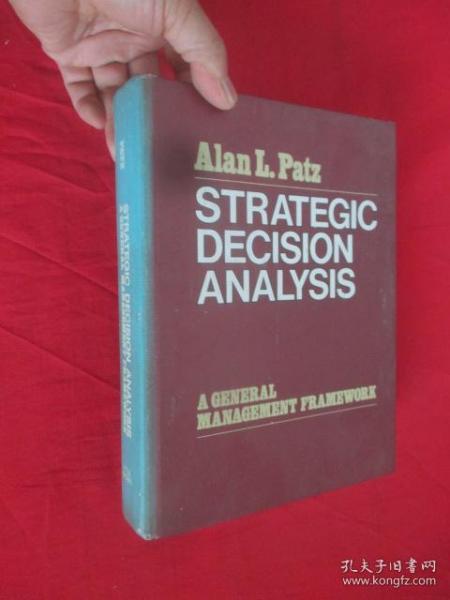
Strategic Goals: The primary goal of special textile development is to create innovative products that meet specific requirements or solve specific problems. Here are some key goals to consider:
- Innovation and Creativity: Encourage designers and developers to explore new materials, patterns, and techniques to create unique and high-value products.
- Environmental Sustainability: Focus on developing textiles with low environmental impact, such as those made from recycled materials or those that can be easily recycled.
- Cost-Effectiveness: Create affordable solutions to address market needs while maintaining high quality standards.
- Durability and Performance: Design textiles that withstand harsh environments, perform well under various conditions, and last longer than traditional options.
- Accessibility: Make special textiles accessible to a wide range of users, regardless of their background or economic status.
Key Considerations: To achieve these goals, several key considerations must be taken into account:
- Market Research: Conduct extensive market research to understand customer needs, preferences, and trends. This will help guide product development and positioning.
- Technology Adoption: Invest in advanced technology that can enhance product performance and reduce costs. This could include automation, digital printing, eco-friendly dyes, and other cutting-edge technologies.
- Regulatory Compliance: Stay up-to-date with relevant regulations and standards to ensure that special textiles comply with legal requirements and industry guidelines.
- Quality Assurance: Develop rigorous quality control measures to ensure that every product meets the highest standards of quality, safety, and durability.
- Marketing Strategy: Develop effective marketing strategies that target specific audiences and communicate the benefits of special textiles to consumers.
Case Studies: Here are two case studies that demonstrate successful implementation of the framework outlined above:
Case Study 1: Eco-Friendly Dyes for Textiles In this case study, a company was looking to develop a line of eco-friendly fabrics that were both sustainable and cost-effective. They conducted extensive market research to identify customer needs and preferences, then invested in advanced technology to develop eco-friendly dyes that reduced waste and improved product performance. The company also implemented strict quality assurance measures and launched an effective marketing campaign that highlighted the environmental benefits of its products. As a result, the company saw a significant increase in sales and positive feedback from customers.
Case Study 2: Smart Textiles for Healthcare In another case study, a healthcare company sought to develop smart textiles that would enhance patient comfort and improve healthcare outcomes. They conducted thorough research to understand the specific requirements of their target market, then invested in cutting-edge technology to create wearable devices that monitored vital signs and provided real-time feedback to healthcare providers. The company also established strong relationships with suppliers and partners to ensure the seamless production and distribution of these products. The result was a line of smart garments that revolutionized the way healthcare professionals interacted with their patients, leading to increased efficiency and better outcomes.
Conclusion: Special textile development requires a multifaceted approach that involves innovation, sustainability, cost-effectiveness, accessibility, and regulatory compliance. By following the strategic framework outlined above, companies can create high-value products that meet customer needs and contribute to a more sustainable future. With careful planning and execution, the possibilities for special textiles are endless, and the opportunities for growth and success are vast.
项目背景与目标
随着现代生活对高品质、多功能纺织品的需求日益增长,特殊纺织品开发成为了一个重要的研究领域,本开发方案旨在针对特定市场需求,开发具有高功能性、高舒适性、环保且具有独特设计的特殊纺织品,本方案的目标是提高纺织品的质量和性能,满足特定行业或领域的需求,同时注重环保和可持续性。
特殊纺织品开发方案概述
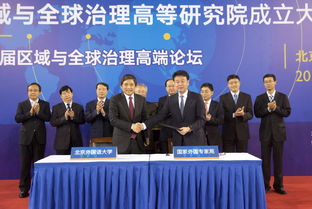
- 材料选择:选用天然纤维、再生纤维、合成纤维等多种材料,结合现代纺织技术进行综合开发。
- 设计理念:注重功能性、舒适性、美观性、环保性等要素,满足不同行业和领域的需求。
- 开发流程:市场调研→材料选择→产品设计→样品制作→生产准备→成品检验。
案例分析
为了更好地说明特殊纺织品开发方案,我们以一个具体的案例进行说明。
某特殊功能性纺织品开发项目
- 材料选择:选用天然纤维如竹纤维、麦秸秆纤维,再生纤维如再生涤纶,以及合成纤维如聚乳酸纤维。
- 设计理念:该产品旨在提高人体舒适度,同时具有抗菌、防臭等特殊功能,设计风格简约时尚,符合现代审美趋势。
- 开发流程:市场调研→选择合适材料→初步设计→样品制作→实验测试→生产准备。
特殊纺织品开发方案的具体实施步骤
- 市场调研:了解特定行业或领域的需求,收集相关市场信息。
- 材料选择:根据市场调研结果,选择合适的材料进行综合开发。
- 产品设计:结合市场需求和材料特性,进行产品设计。
- 样品制作:根据产品设计,进行样品制作。
- 实验测试:对样品进行性能测试,确保产品质量和性能符合要求。
- 生产准备:根据实验测试结果,进行生产准备。
- 成品检验:成品检验合格后,进行批量生产。
特殊纺织品开发方案的具体实施细节
在具体实施过程中,我们将采取以下细节措施:
- 材料处理:对所选材料进行预处理,确保其符合使用要求。
- 生产工艺:采用先进的纺织工艺技术,提高产品质量和性能。
- 质量检测:对产品进行严格的质量检测,确保产品质量符合要求。
- 环境影响评估:在开发过程中,注重环保和可持续性,对环境影响进行评估和监测。
- 宣传推广:通过多种渠道进行宣传推广,提高产品的知名度和美誉度。
结论与展望
本特殊纺织品开发方案注重功能性、舒适性、美观性、环保性等要素,满足不同行业和领域的需求,通过综合开发多种材料,结合现代纺织技术,可以开发出具有独特设计和优良性能的特殊纺织品,随着科技的不断进步和市场需求的变化,特殊纺织品开发将更加注重创新和个性化,为人们提供更加优质、舒适、环保的纺织品。
Articles related to the knowledge points of this article:
The Fabric of Life:Unveiling the World of Embroidery
Exploring the Rich Tapestry of Textiles from Shaoxing,China
The Fabric of Luxury:An In-depth Look at Shangbo Hotel Textiles
The Storied Traditions of Shijiazhuangs Renowned Textiles
The Art of Textile Design:A Comprehensive Guide for Self-Study
A Glimpse into the Heritage and Innovation of Shaoxing Textiles
